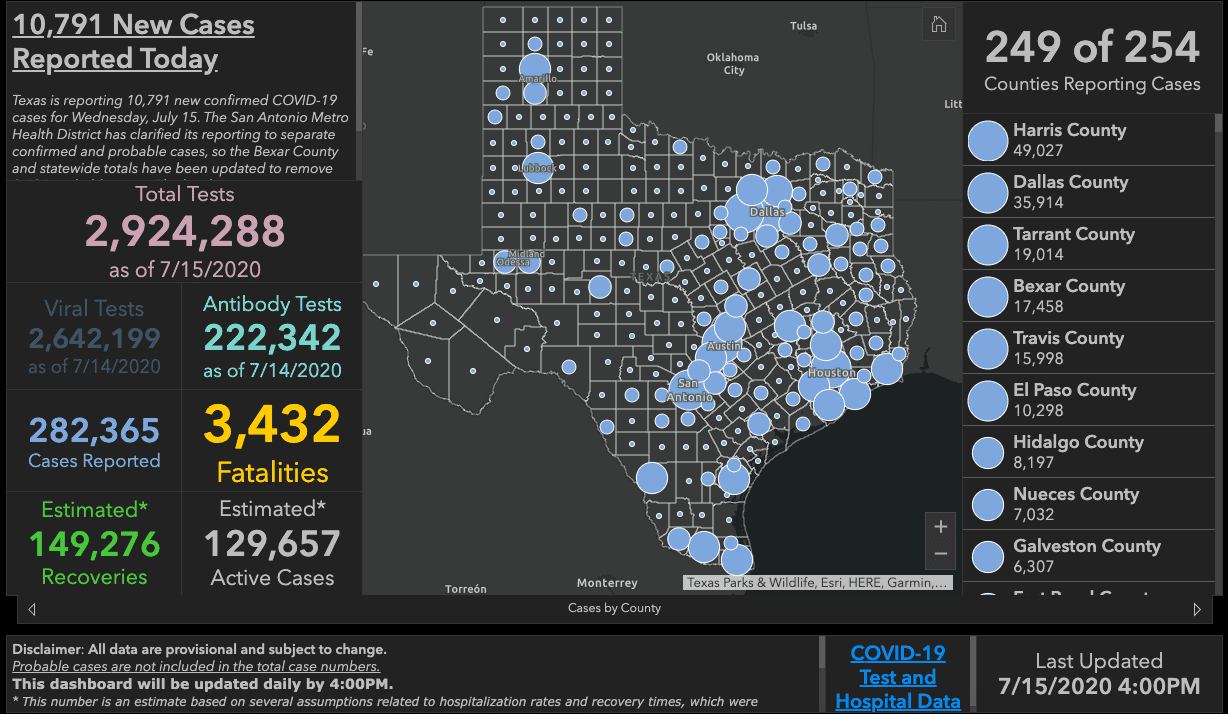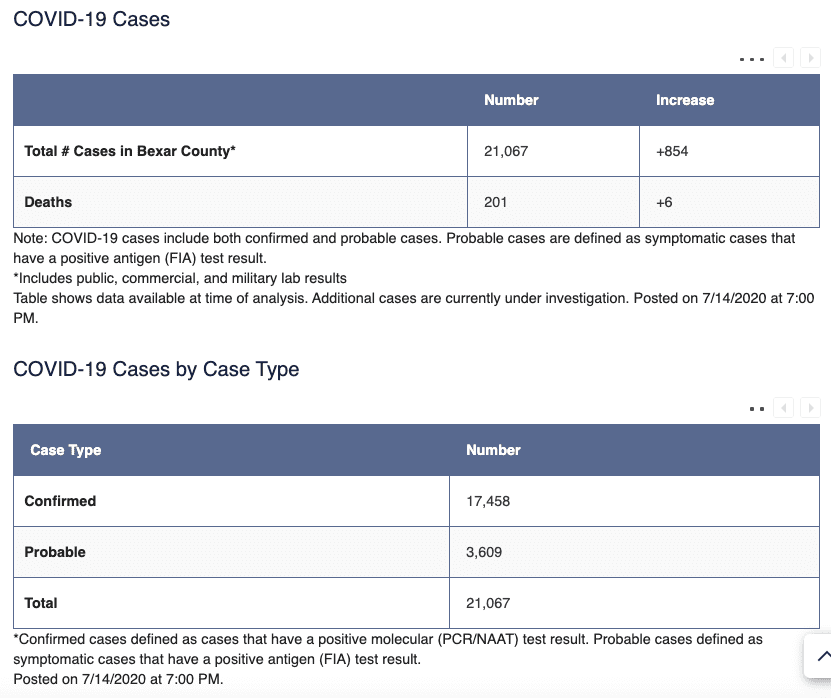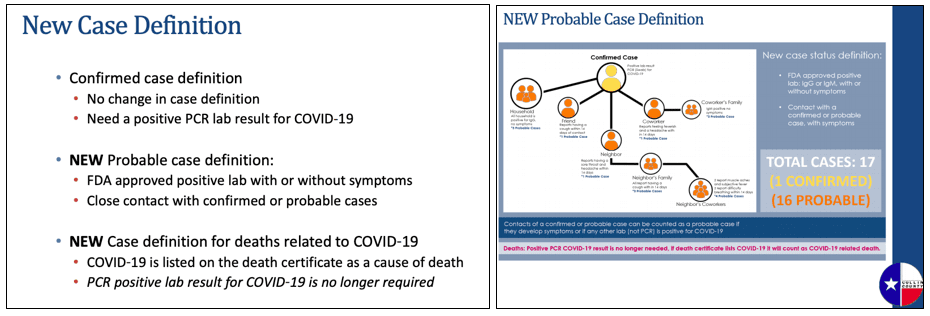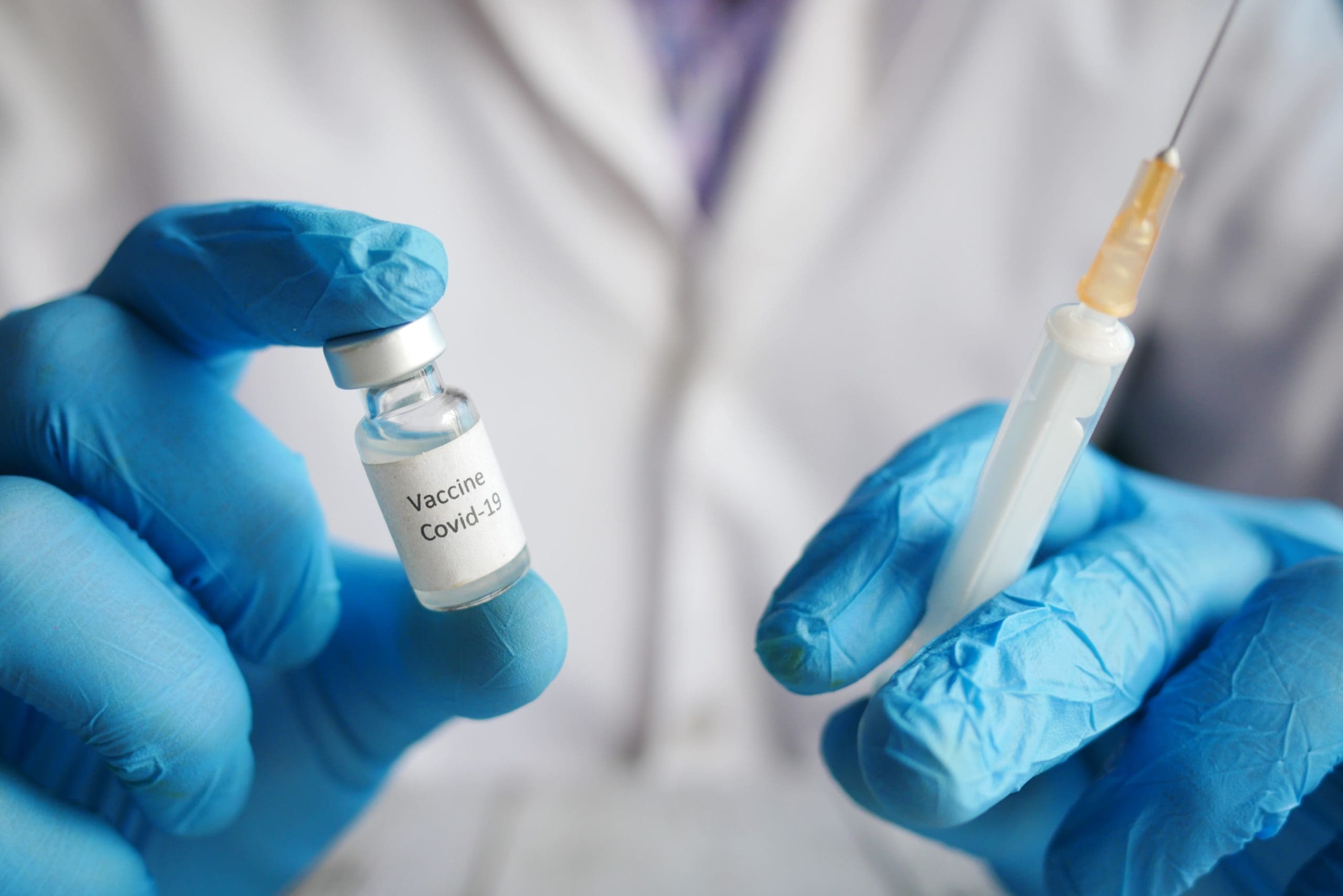Texas public health officials acknowledged yesterday they have been over-reporting Chinese coronavirus cases for at least one county, due to local officials including thousands of “probable” cases in their reports to the state.
The Texas Department of State Health Services updated its online COVID-19 case reporting dashboard to add:
“Prior to July 14, San Antonio Metro Health District (SAMHD) was not fully separating probable from confirmed case counts. On July 15, DSHS updated Bexar County and statewide totals to remove 3,484 probable cases.”
As Texas Scorecard reported last week, DSHS and Texas Gov. Greg Abbott have said publicly that the state tracks and reports “probable” cases—a new category defined by the CDC back in May—separately from PCR-tested “confirmed” cases.
Yet the San Antonio Metropolitan Health District, which tracks and reports COVID-19 cases for Bexar County, showed on its website that their case totals “include both confirmed and probable cases,” and those combined case totals matched numbers reported on the state’s website.
Yesterday, we reported that Metro Health had changed its online data reporting site to add a definition of “probable cases” as “symptomatic cases that have a positive antigen (FIA) test result” and also added a breakdown of the number of confirmed and probable cases included in its total case count. On July 14, such probable cases accounted for 17 percent of Bexar County’s 21,067 total cases—the number reported by both Metro Health and DSHS.
Today, DSHS case numbers for Bexar County (which lag locally reported numbers by a day) match the number of confirmed cases reported by Metro Health: 17,458 as of July 15.
The problem with “probable” cases
Texas began tracking the new “probable” case category at the direction of the CDC in May.
The definition of “confirmed” cases did not change, as explained in a presentation made by a county epidemiologist at the Collin County Commissioners Court meeting on May 18. But the new criteria for defining “probable” cases were expansive enough to create multiple probable cases for every confirmed case.
County officials raised concerns about adding a new and loosely defined “probable” case category weeks into the pandemic.
Collin County Judge Chris Hill worried if the state began reporting “probable” cases—either separately or, worse, intermixed with confirmed case totals—the public would be unduly alarmed by a perceived “spike” in cases and lose trust in data coming from the government.
“That doesn’t help us from a public standpoint to put out numbers that the public are going to distrust,” Hill said at that meeting.
Hill said adding probables to the mix would also stress local health department resources by inflating the number of people being monitored—a key factor as the county considered whether to continue tracking COVID patients locally or hand off the responsibility to the state.
At a special commissioners court meeting on May 29, officials decided to transfer the county’s COVID case tracking and reporting duties to the state starting June 1, after Hill said the governor’s team had since assured him “neither DSHS nor the state will include probable cases in any reports specific to Collin County.”
On June 22, Collin County Administrator Bill Bilyeu followed up with commissioners on how DSHS was reporting case numbers for Collin County:
“The positives that you’re seeing [in the state’s reports] are true positives. Those aren’t self-reported, those aren’t antibody tests. … The numbers you see … have nothing to do with the change in the state’s counting.”
“What we understand from the state’s counting is those numbers are being reported to the CDC. That’s not something that’s being included in their public releases.”
But other large counties and metropolitan areas with public health departments have continued to handle their own coronavirus case tracking and reporting—including San Antonio Metropolitan Health District in Bexar County; Corpus Christi-Nueces County Health District; the City of El Paso in El Paso County; and Dallas, Denton, Harris, and Travis counties. Like Metro Health, they send their local data to the state each day, and that data is posted publicly on the DSHS COVID-19 dashboard, usually the following day.
DSHS has not yet responded to Texas Scorecard’s request for clarification about whether its reported case data from other local health departments includes probable cases.









